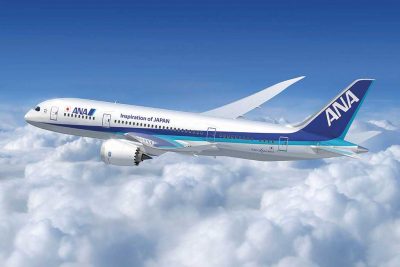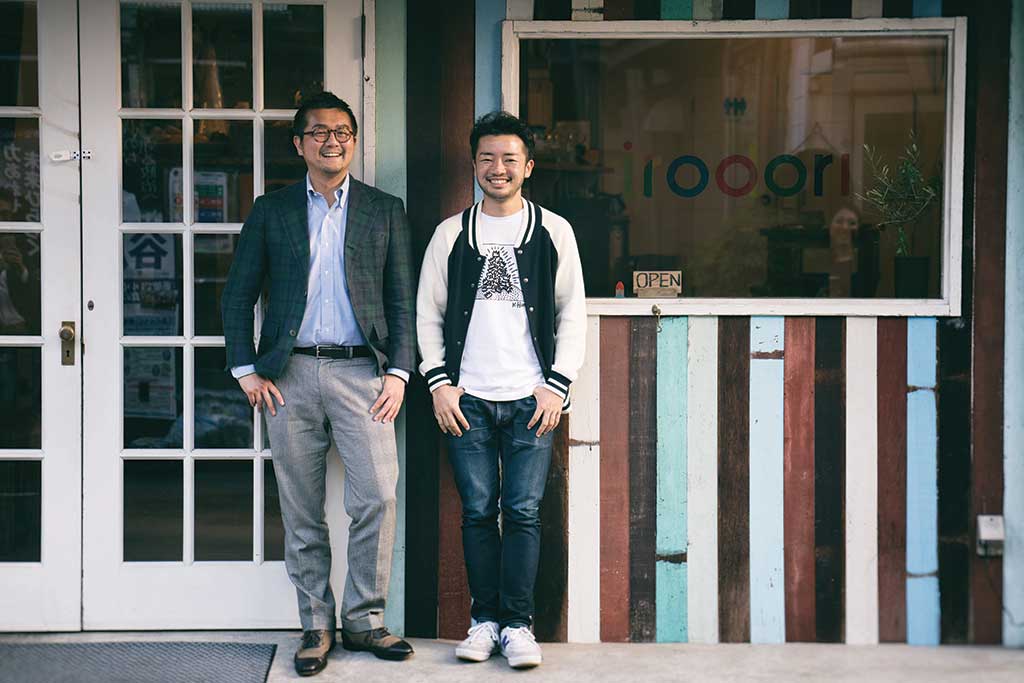Gay Tokyo offers something unique and different from many other big cities. In Tokyo, the extremely ancient meets the extremely modern, and those juxtapositions play out in everyday life.
A few years ago, I went on an international marathon tour. You can learn a lot about a city from how it cheers on its runners. Bostonians handed out plates of oranges and shouted positive encouragements. Tokyoites offered hand-carved chocolates and homemade sushi, and bowed to the runners.
Gay Tokyo offers something unique and different from many other big cities. In Tokyo, the extremely ancient meets the extremely modern, and those juxtapositions play out in everyday life.

Shinjuku, Tokyo
Photographer Cassidy DuHon and I visited Tokyo earlier this year. During our week there, we met with LGBT rights activists, male geishas, and Japanese drag queens. We sought out the newest luxury hotels and spas, the most popular gay bars, and the freshest slices of sashimi.
Some people say that Tokyo is similar to Taipei or Seoul. On the surface, it may look so, but scratch below the kimono and you quickly find tastes, sights, and sounds in Tokyo that you can’t find anywhere else in the world.
From the moment I boarded the plane to Tokyo from Washington, D.C., the All Nippon Airways (www.fly-ana.com) staff only spoke to me with smiles. At some point I had to remind myself that I didn’t always have to smile back. Auspiciously, I turned on our inflight entertainment to find an LGBT movie called Close-Knit, which tells the story of a Japanese transgender woman and the relationship she builds with her boyfriend’s niece. It’s beautifully directed and includes an emotional scene where the heroine of the story burns 108 colorful wool-knit penises on the beach, symbolically breaking from her former male identity.
I always bring face masks on long flights because recycled air dries out my skin. Often the flight attendants gasp. My ANA flight attendant didn’t break her smile, and hours later, complimented me for looking refreshed and gave me suggestions for Japanese-brand facemasks to purchase in Tokyo. She knew her audience well.
After the movie, I ordered another glass of Champagne and converted my seat into a flat bed. ANA’s business class seats include a mattress top that you add on when you want to sleep. I woke up for breakfast and felt 100% ready to explore Tokyo when we landed.
Narita Airport is about an hour and a half from the city. It was a smooth high-speed train ride from the airport, with beautiful views of rice paddies. You start to see the distances between buildings inch closer and closer as you approach Tokyo.
Arriving in Shinjuku, a massive commercial and shopping ward that is home to a gayborhood, the first thing I noticed was how smokers huddled shoulder to shoulder in little glass fishbowls. Certain wards in Tokyo began passing laws restricting outdoor smoking to designated areas, and its citizens seem to actually be following these rules.


ANA (www.fly-ana.com) offers non-stop flights from several major American cities, including Chicago, Los Angeles, New York, and Washington, D.C. ANA will open its third daily direct flight from Tokyo to Los Angeles on October 29th this year. In June, they won awards for “World’s Best Airport Services” and “Best Airline Staff in Asia” at the 2017 World Airline Awards hosted by SKYTRAX. ANA was also awarded the highest 5-Star Airline Rating for the fifth consecutive year.
Since June 2016, ANA has permitted same-sex partners to share miles and inherit mileage from one another. Earlier this spring, ANA helped to raise awareness of LGBT peo- ple’s experiences in Japan by including a film (Close-Knit) about a Japanese transgender woman in their in-flight entertainment. ANA is the launch customer, and biggest operator, of the Boeing 787 Dreamliner. On the 787-9, ANA has one of the largest business-class cabins in the industry, with 48 seats set-up in a staggered 1-2-1 configuration. All seats are aisle seats, with excellent privacy, and a Nishikawa Sangyo Air Cyclone bed pad you can lay down to turn your lie-flat seat into a comfortable mattress. Amenities also include a white tea facial mist from Neal’s Yard Remedies. In-flight meals offer both “Japanese Cuisine” and “International Cuisine” set menus, as well as a variety of “light dishes” available throughout the flight, including a rich and warming IPPUDO miso ramen.
—Allister Chang
We walked through the orderly crowds and checked into our first hotel, the Shinjuku Prince Hotel. From the window in my room I watched as hundreds of people walked along the streets below. Then, suddenly, I heard a growl and looked up to see the Godzilla statue atop Toho Cinemas stomping and chomping. Only in Tokyo.
The convenience of this Prince location is hard to beat—the second floor is the Seibu Shinjuku Station, and it’s a five-minute walk for JR lines. Though there’s no gym, a room at this hotel costs a relatively reasonable amount, and is within walking distance to many gay bars.
After unpacking, our guides Shintaro and Masa met us in the lobby and took us on our first night out and about. Out Asia Travel (www.outasiatravel.com) is a gay travel company that offers customized tours of Tokyo. Shintaro Koizumi, the president, is a veteran of the travel industry. He knows Tokyo like the back of his hand, and occasionally throws out adorable interjections of “hey girl, hey.” His associate Masa added us on Whatsapp in case we ever had questions or got lost.
Shintaro and Masa started by teaching us the basics. Kawaii means cute and kakkoii means handsome. Show off your new proficiency in Japanese gay speak on Jack’d, the preferred gay meet-up app. There’s also an app called 9monsters, but it’s in Japanese only. “Japanese people are generally shy,” Shintaro explained with adorable sincerity. “But not online and not in the dark.”
For our first meal, we went to the gay-owned Kanva. The owner, handsome and serious, started us off with a wasabi Shochu cocktail with shiso leaves. He then offered us a variety of dishes from the Tamba region of Japan, such as a strawberry salad with marinated tofu and white miso paste; a Japanese ginger and avocado salad; a cracker with crab and cream chease; and a pork stiry-fry with sesame oil and chopped scallions. As we ate, one of the guys eating at the restaurant (a dancer, no question) posed in his tight sweatpants on the staircase by the entrance, reveling in how everyone in the place turned their heads to watch him smoke his cigarette.
After dinner, we went to our first bar in Tokyo, Uncle Uncool. We walked up a wooden set of stairs to discover that the place had only four seats at the bar. As there was already one other person there, one of us had to stand. The bartender here introduced us to Hibiki Whisky, a premium whiskey distilled by Suntory. It was our drink of choice for the rest of the trip. We tried to buy a bottle to bring home, but it was sold out at every shop, including at the airport.


Salon de Shintaro
Within a 13-block radius, there are over 300 gay bars in Shinjuku Ni-chome, Tokyo’s gayborhood. Most have fewer than ten seats. Walking through this area of the city, it feels like you’re in a vertical concrete jungle, where each tiny gay bar fills its own niche in the ecosystem. In Shinjuku Ni-chome, you can stay in one high-rise building and go from a Hawaiian-themed burrito-bar for femme lesbians (yes, that exists and it’s called Rainbow Burritos) to a fried-fish sake-bar for middle-aged gay men who enjoy Radiohead.
Over the next few nights, we visited dozens of bars. My favorites invited you to experience the owner’s dream living room, turned into reality. The décor, the drinks, and the owners’ wild personalities all contribute to making these venues uniquely Tokyo.
Bridge was another one of our favorites. It’s a ten-seat gay bar with a patio located on the sixth floor of the Sensho Building in Shinjuku Nichome. Mitsuaki, the owner, knew most of his guests, so I asked him to introduce me to someone at the bar who spoke English. He said, “there’s only one,” and called over a guy named Kei. Half-English and half-Japanese, Kei indulged me in some real talk. “A lot of gay bars in the city refuse foreigners because they can’t speak Japanese,” he explained. “We all know each other here, and not a lot of Japanese people speak English; it’s not the easiest scene to break into.”


(L to R) Gon Matsunaka and Fumino Sugiyama
To get into some of these more exclusive bars, many of which stick a “Members Only” sign at the entrance, it’s helpful to have a local guide. We felt like we were in excellent hands with Shintaro at Out Asia Travel. We told him the style of bars we wanted to see. In our case, bars that were unique to Tokyo that we couldn’t find anywhere else.
Our favorite of these “Members Only” bars was a place called Le Quine Guine. The owner told us that quine is the tenth-century Japanese word for putting on your kimono after a night of sex. Somehow that concept perfectly captures the atmosphere he creates. High stools wrapped around a grand piano, that served as the bar. Violins are hung from the ceilings and brass instruments tile the walls. Unless you come with someone who the owner knows, he won’t let you in. After seeing how busy the bar already was when we arrived, this exclusive policy starts to make sense. On a Tuesday evening at 9 P.M., all of the eight seats in the bar were filled. “If more people show up here,” the owner explained, “I won’t be able to entertain.”
That week, Shintaro also showed us some bars that were more accessible for an international crowd. Unlike the more exclusive, stylized bars up on the higher floors, these bars were on the ground floor, with open patios and big signs. You can hear English being spoken down the alley at Eagle Tokyo. Though not exactly a leather bar, it has more of a grungy industrial vibe than many of the neighboring lounge bars. One wall has a giant sketch of two naked hairy men drawn by the gay Japanese artist Jiraiya. We grabbed a drink and stood on the street, where the crowd was quickly spilling out. Here, we mingled with the lesbian crowd from the bar next door (Bar Gold Finger) under a neon “Vacancy for Women” sign. Gold Finger is the lesbian mothership of Tokyo that becomes a women-only bar on Saturdays. Unlike many other gay bars in Tokyo, Gold Finger is on Google Maps, so it served as a good drop-off and meeting point for the other evenings during the trip.


